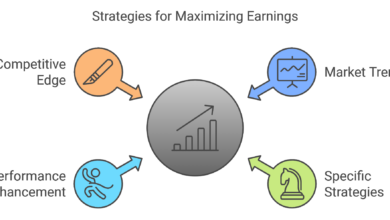FarmERP on how the COVID-19 pandemic has affected the input and output of the Agricultural sector

INTRO:
We live in an age where the age-old occupation of agriculture faces turmoil and turbulence in all its sectors and divisions due to the ramifications of the COVID-19 pandemic. Not just agriculture, but every business industry is suffering tremendously due to the panic state we are in, and also the fact that our entire country is confined to our homes to flatten the curve and stop the spread of this virus.
The proof of the industry suffering is in the rise of the unemployment percentages. The Centre for Monitoring Indian Economy measured an escalation from 8.4% in the middle of March to a leap of 23% in the first week of April. In the urban and city areas itself, there was a soaring rise to 30.9% in the unemployment measurements. This emphasizes strongly the adverse effects faced by all levels of employment, giving a reason for the panic faced by many.
EFFECTS OF COVID-19:
The biggest hit of all will be felt by daily wage earners, who work on the field or behind counters day and night to put together meals for the coming days. Informal workers and daily wage earners are (for the most part) not provided with any severance or compensation via their employers, who would not be at fault as they cannot shell out those resources. In times like these, the Indian Government has acted swiftly in this time of crisis and announced a $22 billion relief package, inclusive of food as well as monetary transfers. Apart from the Centre’s initiative, many state governments have also taken up the onus of their people and are providing their support packages.
Due to the input of the farmers being affected, the entire output received has been disturbed. Crops which are ready for harvest, await their fate in the fields, where they are left to rot, in turn hampering the future crops who will take their place, or they are disposed of by the farmers. This calls for not only losses, but extra costs incurred to carry out the process of disposal for the crops which are no longer fit for consumption.
Various other factors contribute to the increasing losses faced by the agricultural sector, including the restriction of movement and transportation, which means that even the crops that have been harvested are unable to reach their destination. The agricultural supply chain, due to its diversity consists of so many sectors and verticals, that due to the effect of the COVID-19 panic reaching each sector, the disruption in the supply chain is being felt enormously.
STEPS TAKEN:
To establish direct supply, many cooperatives have taken certain measures to ensure the right kind of distribution patterns are maintained and followed. The Pune Municipal Cooperation has taken up the task of directly contacting with FPC’s (Farmer Producer Companies). These FPC’s, in turn, are providing consumption materials in societies. Online order forms are generated as well, where the supply is as frequent as possible. Platforms like Big Basket, Grofers and many more are keeping up with the continuous supply of fruits and vegetables.
In times like these, technology has a tremendous role to play in smoothening out processes and assuring the best sort of deliverance to consumers. AgTech companies are working from home, keeping their clients’ systems up and running 24/7. However, individuals who work on the field even from the AgTech industry are trying their best to sustain the hits felt due to not being able to conduct site visits or other daily agronomic operations.
THE EXPORT SECTOR:
Sectors of the agricultural industries relying on the export of goods for sustenance are also hit tremendously due to the restrictions of movement. Goods that are perishable and do not have a long-drawn shelf life, which have already been shipped, await at the ports of various countries. Once they surpass their shelf life, they will not be fit for consumption, and this causes losses to all parties who have been part of the export process since one entity will not be able to bear all the losses. This, however, would be the ideal time to target specific export markets where the analysis can be seen of increasing demand for certain types of produce, e.g., the demand for grapes in China is increasing.
The Maharashtra State Agricultural Marketing Board has helped to start the export of mangoes. However, the domestic consumption of fruits like mangoes and grapes have depleted due to the hindrances in reaching consumers. This hampers the expectation of profits which could have been made by the sale of this product.
CONCLUSION:
At the end of this lockdown, when the situation begins to work towards the reestablishment of day to day processes and procedures, there may be a shortage of produce we are faced with. The demand will rise while the supply falls, creating a gap in the cycle. Crops like wheat will be able to survive the summer heat due to it being a summer crop, but fruits and vegetables will most definitely require adequate amounts of water to be fit for consumption. The farmers will also require seeds, fertilizers, etc., whose supply has also been halted. This will affect the new crops as well as the new harvest. Produce like onions will be available in abundance due to the ample amount of supply foreseen.
To counteract this unprecedented drop inactivity, several factors will assist the growth of agriculture post the lockdown. Technology will be a pulling factor in this, as manual labor which is unavailable as of date will be substituted by technology.
“Technology in the field of agriculture will assist individuals in gaining a transparent knowledge about the products they will consume. Due to the reservations that the consumers have of the produce, they are consuming in a time where everyone is focusing majorly on their health, traceability and transparency will be appreciated,” said Mr Santosh Shinde, COO and Co-founder, FarmERP



